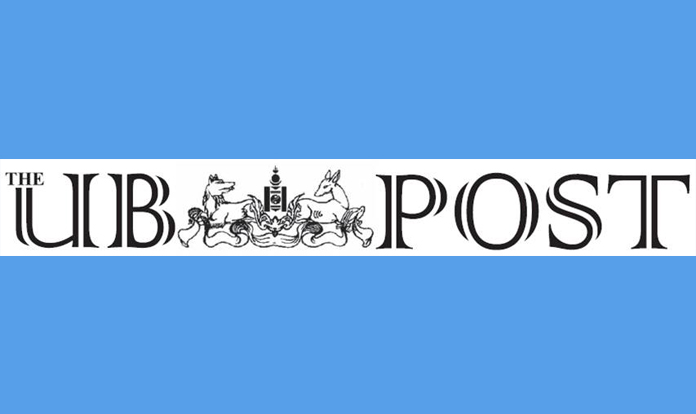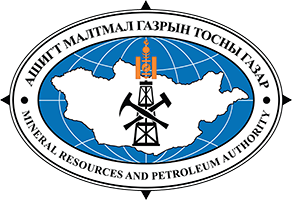Head of DMROM underlines the importance of investment for finding new deposits

Mongolia needs to improve jurisdiction and transparency to attract more foreign investment, according to B.Baatartsogt, the Head of the Department of Mineral Resources and Oil Mineral (DMROM), formerly known as the Mineral Resource Authority.
B.Baatartsogt spoke about investment prospects in mining and exploration fields, licensing, and ongoing research and projects in this field in the interview below.
You were promoted to the Head of the DMROM right after the new government was established. What have you accomplished to date?
A new government was founded after the 2016 parliamentary election and the Mineral Resource Authority and Petroleum Authority, which used to operate separately, were merged. I’ve been reconstructing the internal structure and trying to stabilize activities since my appointment. Our department then conducted an analysis on ways to attract investment for geological exploration and the oil sector, and improve the legal environment.
There are international research organizations that assess investment attractiveness for mining and exploration companies worldwide. Mongolia didn’t get a good evaluation in this field in 2015, according to the results of a survey conducted by Fraser Institute, an independent non-partisan research and educational organization. Mongolia ranked in 85th out of 109 countries. This organization has a high reputation among mining and exploration investors. Fraser Institute analyzed that Mongolia has a good legal system but has too many overlapping laws, regulations and standards. We also fell back in rank due to poor transparency in mining and exploration fields. In other words, our reporting practices aren’t transparent and we don’t provide sufficient information to investors.
The Natural Resource Governance Institute didn’t give Mongolia a good evaluation either. Mongolia received a "partial" score of 51, ranking 26th out of 58 countries in the Resource Governance Index. We did an analysis on this too and the results were the same – reporting practices are poor. Mongolia's performance in safeguards and quality controls component wasn’t that good. We understood that Mongolia needs to eliminate jurisdiction overlap and incomprehensiveness, and improve reporting practices, transparency and information flow. This way, we can improve mining competitiveness. The DMROM will focus in these areas. Accurate information is very important for not only investors but also the government.
What is the DMROM doing to enhance information transparency?
We’ve started some work for this. We opened Mineral Resources Information Center within our department. The center will develop standard reports on mining, exploration, oil and heavy industries and instantly disclose it to customers. In short, we aim to bring transparency through this center.
The biggest work the Mineral Resources Information Center is carrying out is laying the foundation to exploration in Mongolia by digitalizing results of surveys conducted with state funds. We launched a project for this with Australia-Mongolia Extractives Program, European Bank for Reconstruction and Development, and Geology of Germany.
Large companies interested in investing in minerals and oil fields will want to look at the basic geological information of Mongolia. Experts will be able to identify which areas are likely to be rich in minerals and determine the soil structure and mineralization. Basic surveys are very important to investors.
How much of Mongolia’s territory been subject to geological surveys?
I wouldn’t say that we’ve done many geological surveys. Geology of practically all of Mongolia has been covered on 1:200000 scale mapping. Basically, it’s been researched but we haven’t finished geological mapping on 1:50000 scale. It’s at 34 percent completion. We need to continue to conduct such detailed surveys for the remaining areas.
We can determine the geological structure and increase the chance of finding new depos- its. We’re also doing other studies, such as air geophysics and hydrogeology studies. The government set a target to cover 40 to 45 percent of Mongolia's total land with 1:50000 geological mapping in its action plan.
Nine billion to 10 billion MNT is projected for this work every year and the companies that implement it are selected through a tender. This year, for example, 9.3 billion MNT was allocated for geological mapping. Mining licenses are issued to professional companies through a government tender. Companies have to submit bids to get exploration licenses.
Are people interested in investing in Mongolian mining and exploration companies? Are many companies applying for exploration licenses?
The metallic mineral sector alone circulates 15 billion USD to 20 billion USD worldwide. All this money flows to countries with abundant natural resources which have a transparent system, and good taxing and legal environment. These countries are attractive for investors. Mongolia needs to seize a portion of this money. To do that, we need to improve transparency and jurisdiction as I’ve said before.
Our two neighboring countries take 10 percent of the total capital circulating in [the global] exploration field. Seven to eight percent of it goes to Australia and another 10 percent flows to South America. Our target is to attract at least three percent of this large money flow. The exploration sector has money and potential inves- tors. The only thing we lack is information that will leverage and attract investors to invest in Mongolian companies.
There are countless national companies that can invest in the exploration sector. Around 2,000 companies compete for exploration licenses. Both local and foreign companies are interested in Mongolia's exploration field.
How many companies have mineral exploration licenses right now?
Mineral licensing was stopped in 2010. At the time, almost 4,000 companies had licenses. Since then, it’s reduced to 1,000. Licensing resumed in 2015 when amendments were made to the Law on Minerals.
By the end of last year, there were 2,022 companies with exploration licenses and 1,558 with permits to use minerals. Around 8.9 percent of the country’s territory has been allowed to survey, explore and use through licenses. Exploration licenses have been issued for eight percent of this area and permit to use has been issued for the remaining 0.9 percent. This isn’t really a big number. Since 2015, approximately 1,000 new exploration licenses were issued.
Is it true that changes will be made to the procedure for issuing mining and exploration licenses?
Exploration licenses are provided based on two different principles and procedures. The first method is granting permits through tenders. Ten- ders are announced for fields that have already been identified to have resources, and those that have undergone prospecting and feasibility studies with state funds. Companies are selected based on their bid and company assessment, which includes exploration experience, capital, personnel capacity, and technological capacity.
The second method is issuing licenses to the one who sends a proposal first. This method has been implemented through an online system since 2015. However, the online system is very lacking. It needs to be updated. The procedure for license issuance through application will be changed, but the online application will be continued. The system will become more developed and transparent. Currently, we’re issuing exploration licenses through tenders.
There’s a suspicion that authorities of smaller communities give away lands depending on donations from companies. For example, authorities cancel special use permits to allow another company that bought a new ambulance for a local hospital to explore the land instead. Shouldn’t this be regulated?
Two things need to be enforced to manage this through economic incentives. First, companies must allocate 30 percent of their royalty to the local soum’s development fund. Secondly, 50 percent of license fees must be given to the local authority. These two things are specified in the law. The Ministry of Finance needs to implement them.
Presently, royalties and license fees are centralized to the state budget, and then, evenly distributed to smaller communities. This has to be discussed at government level. Soums and provinces that are doing exploration and mining activities need moderate funding. By following the law and funding soums and provinces, authorities will start to give significance to mining. Mining and exploration companies are required to sign a cooperation agreement with local authorities, according to government regulations. Companies must clarify how much they will spend on infrastructure development and environmental restoration. This will help develop soums and provinces.
There needs to be a state policy which gives priority to mining license issuance in provinces with poor infrastructure. A portion of mining investment is given to local government budget because workers are hired locally and workers will obviously buy food from nearby stores.
Besides focusing on attracting investment, what other plans does the DMROM have for the next few years?
We will execute projects specified in the Government Action Plan and announce new fields for exploration. Alt 2 Program has been approved. Within this program, we plan to increase mining operations and aim to mine 25 tons of gold by 2020. We’ll also have to utilize gold licenses limited by the Long-Named Law (Law on Prohibition of Mineral Exploration and Extraction Near Water Sources, Protected Areas and Forests) and other legislations.
We will intensify crude oil exploration activities and attract more investment. Our department is trying to hold an open tender for establishing a production sharing agreement in several oil fields. We also plan to intensify exploration projects for nonconventional oil such as coalbed methane and shale gas, as well as increase investment for this line of work.
Is there any chance of finding new significant deposits?
Companies are actively exploring and surveying. There are a few projects with good investment. There are opportunities for opening large coal and gold mines. The more exploration we do, the higher the chance of finding new deposits. We can do more exploration with more investment. Licenses don’t allow you to buy significantly large deposits these days. The only way to own these kinds of deposits is by investing and increasing one’s chance of finding large deposits. Finding a deposit among 1,000 other license holders in Mongolia is like hitting the jackpot because that’s how low the chances of finding large deposit are. Mongolia has potential to discover a world-scale deposit if exploration activities are intensified and more investment drawn in. I mean, we’ve already found one of the largest deposits in the world here in Mongolia.
...Mongolia has potential to discover a world-scale deposit if exploration activities are intensified and more investment drawn in. I mean, we’ve already found one of the largest deposits in the world here in Mongolia...
Source: The UB post
